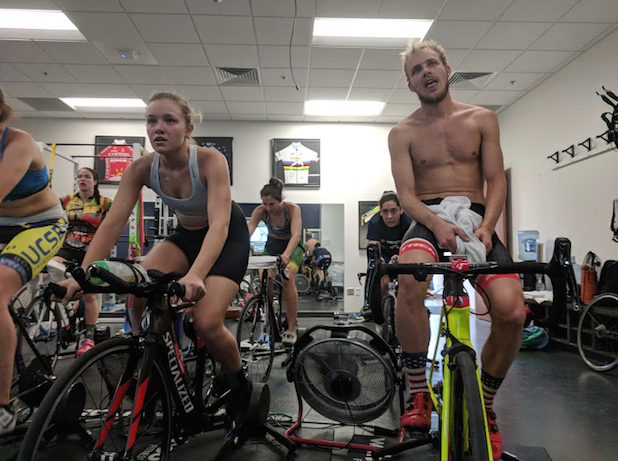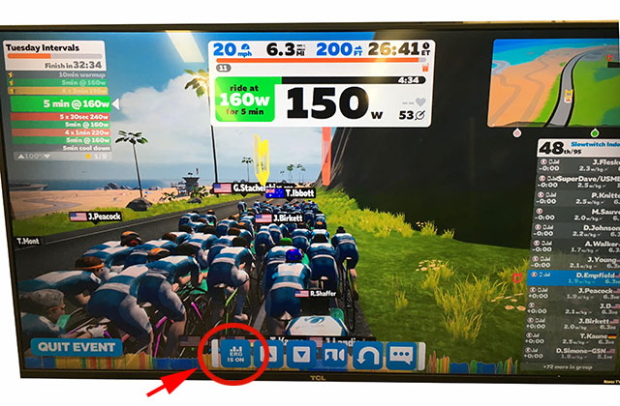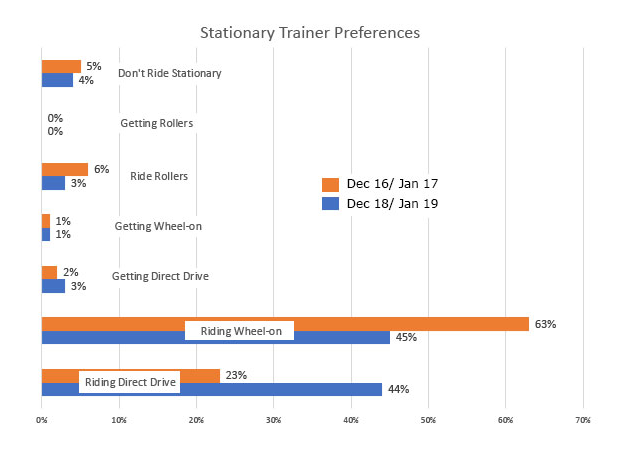Stationary Cycling Isn’t Seasonal
We announced today that Wahoo Fitness just purchased The Sufferfest and of course our Reader Forum is abuzz now, wondering who’ll purchase TrainerRoad (no one that I know of, I’m just reporting!) and what does all this mean?
I’m happy that we’re here in July and talking about this because I’ve been writing for all of Slowtwitch’s 20-year existence that stationary bike training isn’t seasonal! Or, to the degree it is, it shouldn’t be.
I am not a coach. Let’s all stipulate to that. But I have coached full-distance athletes in the past, who’ve stood on the pro podium in Kona, and for decades I’ve never felt that my themes and theories are worthy of secrecy: First, because I’m nothing special; and Second, because knowing a winner’s training plan isn’t going to put you on that podium any more than wearing George Clooney’s tux will get you the girls.
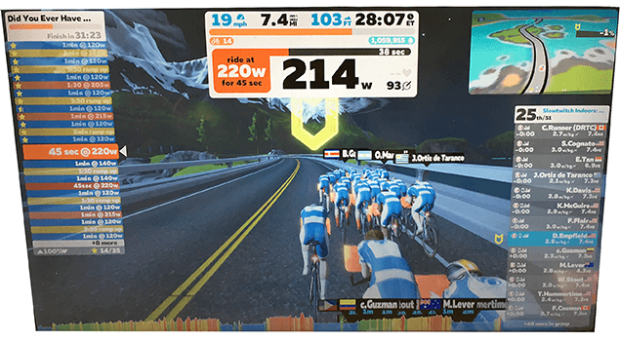
So, let’s talk about those workouts. They were of course athlete dependent. Did the athlete respond well to shorter mileage or longer? High or low intensity? And how quickly did that athlete got him or herself into shape? Also, back in “my day”, it was typical for there to be two or at most three peaks: possibly March (Ironman New Zealand); then anywhere from May thru July, depending on what race the athlete felt was important (Nice, Zofingen, Roth); and then downtime followed by a peak at Kona. Preparations differed depending on what race and what time of year.
If you’re trying to get a Kona male pro comfortable riding a pace that would yield a split in the 4:20s, or a woman riding in the 4:50s, I found that the most reliable methodology (all things equal) was a mix of long rides at various paces (perhaps a half-dozen total rides in the 100 to 125 mile range, taking 6 or 7 hours, in the 6 or 8 weeks leading up to the taper); along with targeted stationary workouts that were 45 to 60 minutes long. In other words, for us, stationary was not a winter thing. It was an in-season speed weapon.
Honestly, back then, we rode our Computrainers more in the spring/summer than we did in the winter. Stationary cycling wasn’t a big thing 25 or 30 years ago, at least in San Diego, which was where we were at that time. In fact, the first stationary trainers that came along – apart from rollers – appeared during my tenure as a cyclist. Rollers were the “multiplayer game” when I was a young cyclist. There were, I suspect still are, roller races, consisting of two hands on what looked like a pool clock, each hand belonging to a set of rollers aboard which a rider rode his bike. The first wind trainers came along in the late 70s and early 80s, and then Computrainer debuted, commanding the stage like Freddie Mercury and we had something that allowed us to finally do on a bike what we could do in the swim and run: perform precise, repeatable intervals without the interference from cars, red lights, flat tires or inconsistent winds.
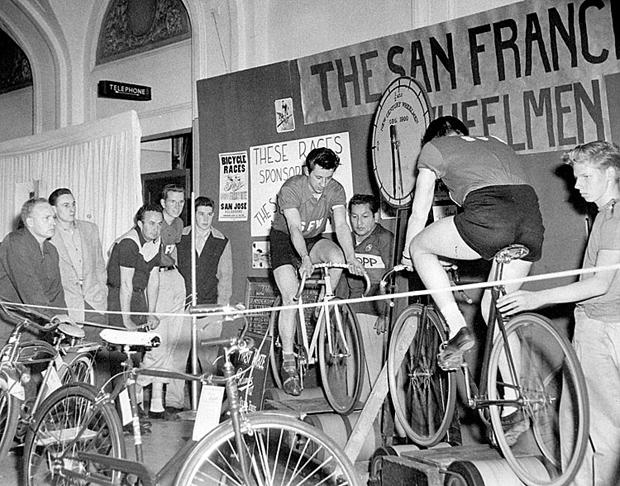
Accordingly, a generation or more ago, the Computrainer and its infamous ERG mode replaced, for me, motorpacing and the other speedwork-oriented techniques upon which cyclists relied. I wasn’t the only one using a Computrainer. More than half the top American pros used them and because I sponsored so many of them with bikes and wetsuits I had some insight into their training. Yes, we all are familiar with the stories of Andy Potts and Lionel Sanders and the time they’ve spent riding indoors, but these athletes simply followed Kenny Glah and a stationary tradition already established.
Every Tuesday I lead a structured training workout, 60 minutes long, on Zwift. I write all the workouts. They’re quite variable. Courses are different, workouts are different, themes differ, but underlying these workouts is an adherence to specific elements that participants can expect. The same efforts, same intensities, same durations, are there every week, and it’s really pretty much the same as what I prescribed a quarter century ago. Just, today, it’s “multiplayer”, that is to say, it’s a virtual spin class, anywhere between 45 and 150 riders depending on the time of year and whether it’s a big week of racing (fewer people take part if they just finished or are tapering for an Ironman).
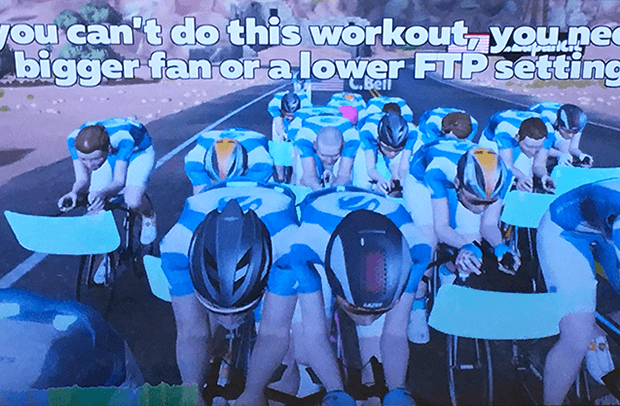
We get our biggest crowds during the Northern Hemisphere winter of course. But we shouldn’t. We should, in my view, get our biggest crowds in the summer, for the reason I just explained. Some are catching onto this. The folks behind the Nautica Malibu Triathlon are inviting their registrants to take part in our Tuesday Structured Training sessions, and in consideration we’re going to tailor a number of our workouts specifically to this group, for this race.
Of course training is training, and whether you’re racing the Nautica Malibu Half Distance or Ironman 70.3 Worlds in Nice, when I write our workouts, I usually think in terms of improving speed and power over a 2 and-a-half to 5 hour cycling effort.
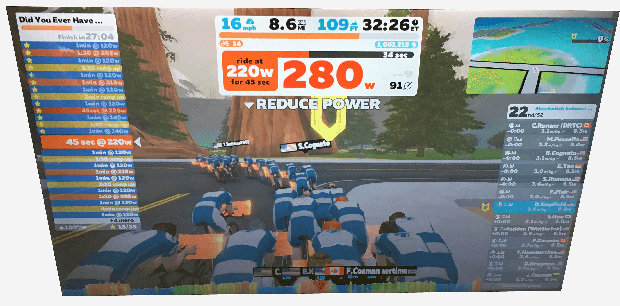
It doesn’t need to be Zwift, of course. The Sufferfest (Wahoofest, ridden by Suffooligans?!), Trainerroad, Golden Cheetah, Rouvy, any platform that allows you to build a structured workout, any of that works. For many, me included, multiplayer is a useful tool, because of the social aspect, the participant expectation, and what you might pick up in the comments during the session. For others, who don’t want the distraction, and who don’t need the glue of the group (I am motivated by group-glue) multiplayer is not where it’s at.
I’ll write about this some more, and get into the weeds of these sessions: What is the appropriate TSS for a 60 minute session, to achieve the sort of gains I had in mind when we were Computrainer users in the 90s and now that we’re Zwift, TR, SF and Rouvy fans today. Stuff like that. I’ll also remind you all how to get yourselves going with these stationary platforms. Folks today still ask what the technical requirements are, how to get themselves set up, so we’ll talk about that as well, because, while stationary season formally starts on Slowtwitch at the end of October, if I had my way you all would be in the thick of that season right now. (For those interested, Here's that Tuesday afternoon structured training workout.)


